Unlike France, Italy, or Spain there aren’t as many UNESCO heritage sites in Turkey. The reason is that these “sites” are usually large areas comprising numerous buildings and landmarks. Turkey isn’t a small country so seeing it all will take at least 2 weeks and will involve a lot of driving or taking domestic flights.
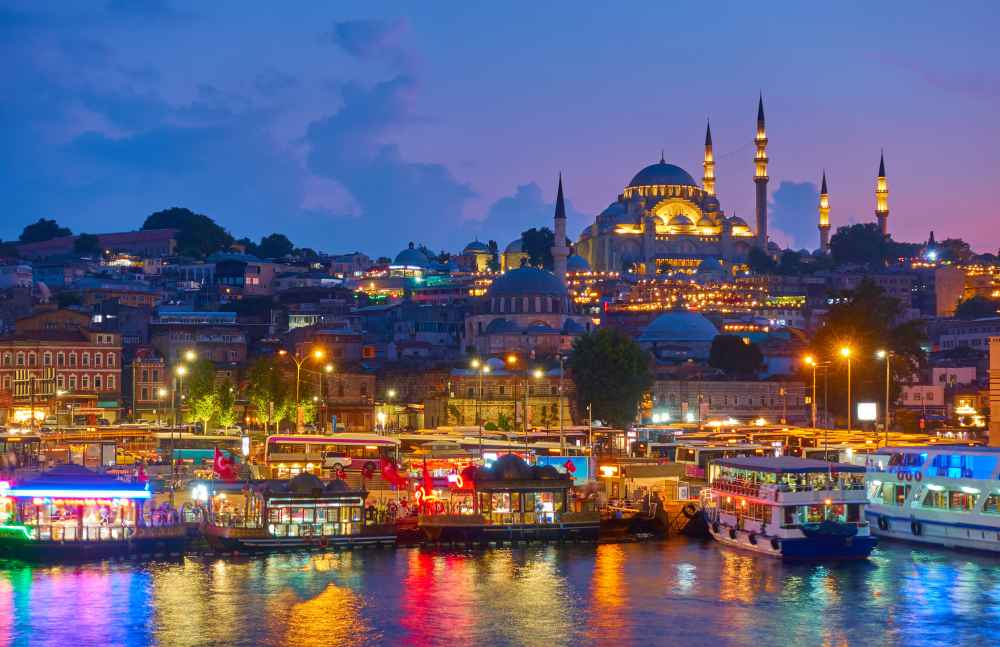
Here’s the comprehensive list of all the Turkey UNESCO sites grouped by the region of interest:
Istanbul and Day Trips
Istanbul airport has been a larger travel hub for Europe to Asia and the Middle East and back. So even not having Turkey as the final destination, there’s a good chance to have a layover in this bucket-list city. Istanbul is the most densely populated megapolis in Europe (16 million as of 2025) leaving behind London and Paris.
For many years it would sit in first place on the TomTom index rating, making it the most challenging to drive. But over the recent years, it dropped to the 100th position, making it obvious that the city has been actively developing and vastly improving its infrastructure.
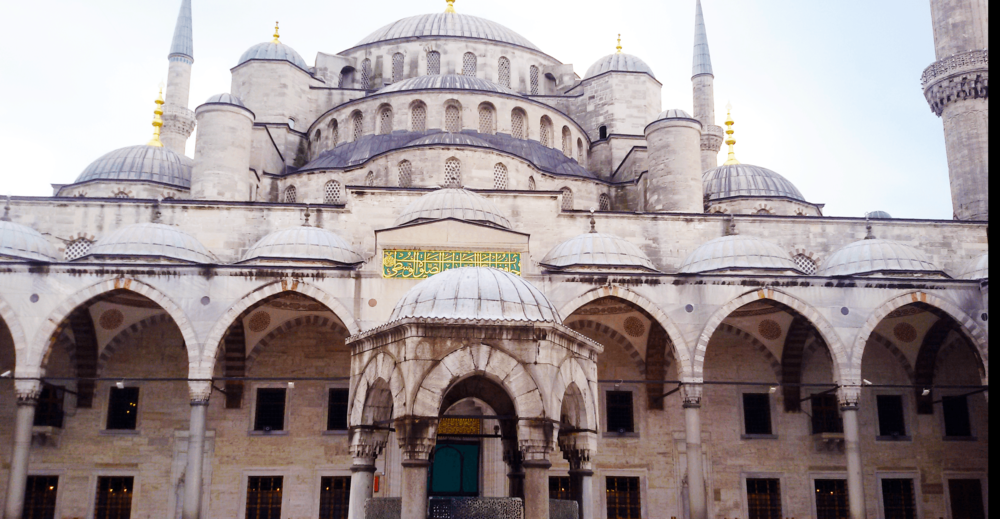
1. Historic Areas of Istanbul
Dating back to the 7th century, Istanbul is a major seaport, washed by 3 bodies of water – the Golden Horn, the Bosporus, and the Sea of Marmara. It was the capital of the Byzantine and Ottoman Empires for centuries, so the historic sites include traces of both of these cultures.
The UNESCO site contains 4 areas:
- Sultanahmet Archaeological Park
- Hagia Sophia: built in 537 AD as the main church of the Byzantine Empire, later converted to a mosque
- Blue Mosque
- Topkapi Palace: the former seat of Ottoman power for nearly 400 years, it includes courtyards, the Harem, and the imperial treasury
- Hippodrome of Constantine: ancient chariot racing stadium and public space that was the center of Byzantine social life. Key remnants include the Serpent Column, the Obelisk of Theodosius, and the Walled Obelisk.
- Aqueduct of Valens: built in the 4th century during the reign of Emperor Valens, it brought water into Constantinople from the Belgrade Forest
- Süleymaniye Conservation Area
- Süleymaniye Mosque Complex: built between 1550 and 1557 by architect Mimar Sinan for Sultan Süleyman the Magnificent
- Historic neighborhoods of Vefa and Vezneciler
- Bozdoğan Aqueduct: Roman-era structure
- Zeyrek Conservation Area
- Molla Zeyrek Mosque: Originally the 12th-century Pantokrator monastery church
- Byzantine-era cisterns and cellars
- Çinili Hamam
- Land Walls: the 5th-century Theodosian Walls, including remains of the former Blachernae Palace.
2. Bursa and Cumalıkızık: the Birth of the Ottoman Empire
Bursa is approximately 2 hours of driving from Istanbul. This serial property consists of 8 component sites in Bursa and the nearby village of Cumalıkızık, featuring the urban and rural systems.
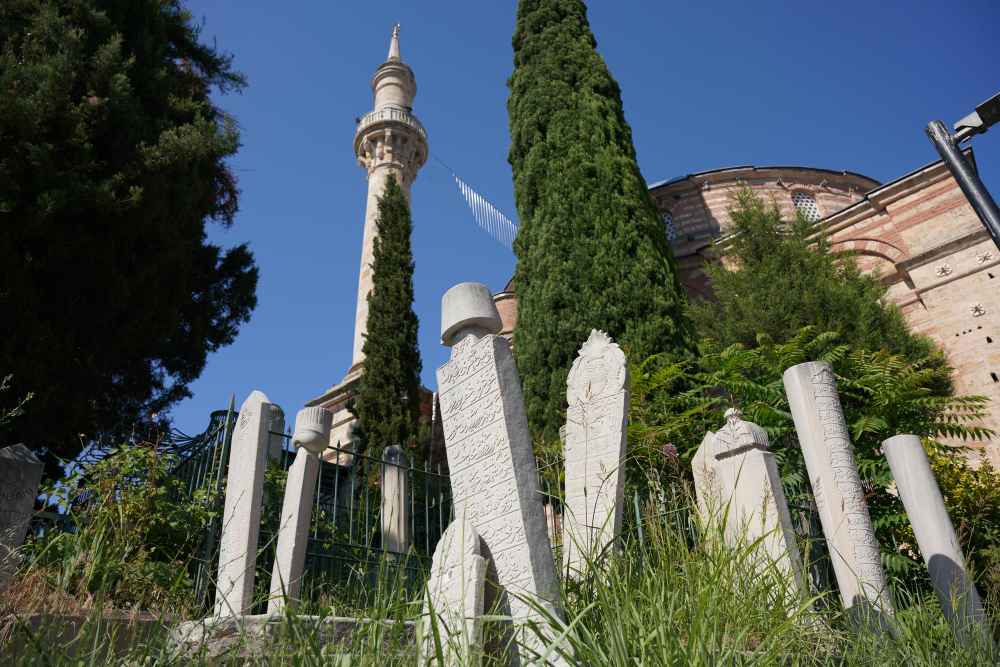
Bursa, captured from the Byzantines in 1326 by Orhan Gazi, became the first capital of the Ottoman Empire. Cumalıkızık village is approximately 700 years old and today has a similar number in population.
Location Details
3. Selimiye Mosque and its Social Complex (Edirne)
Edirne is ~2.5 hours drive from Istanbul, close to the Greek and Bulgarian borders. Same as Bursa, it used to be the capital of the Ottoman Empire at some point in history.
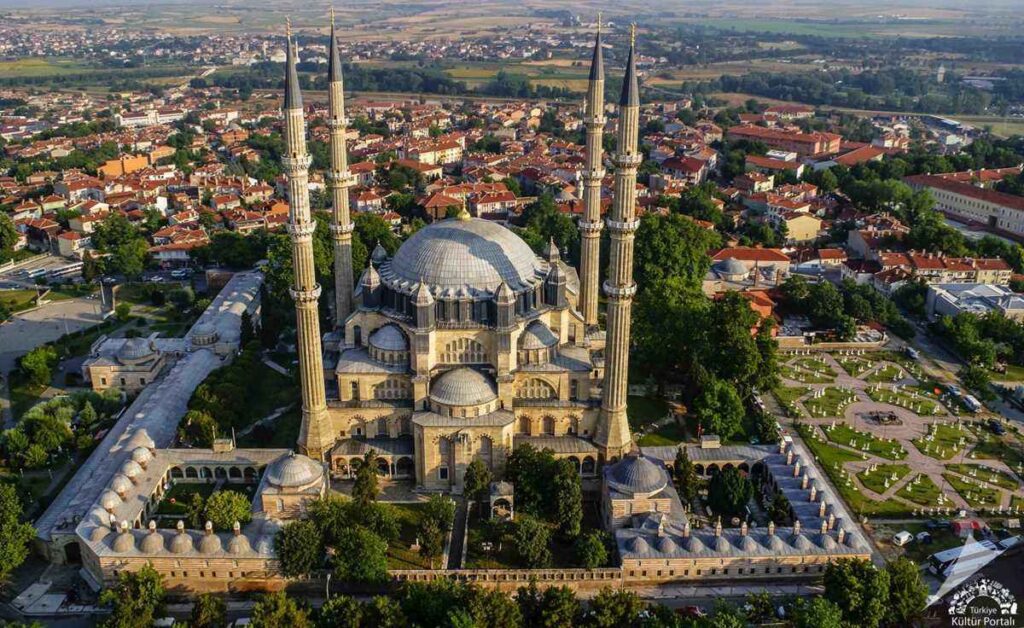
The Selimiye Mosque and its Social Complex in Edirne were designed by the renowned architect Mimar Sinan. Commissioned by Sultan Selim II, the mosque was constructed between 1568 and 1574. The mosque’s construction coincided with the Ottoman conquest of Cyprus in 1571 and 15,000 artisans were involved in the complex decoration.
Location Details
Interesting Facts
- The mosque’s minarets have 3 balconies each, with separate staircases allowing 3 people to ascend simultaneously without seeing each other
- Sinan incorporated fewer half-domes compared to his previous works, showcasing his architectural innovation
- The mosque underwent several renovations, including one by Sinan himself after a lightning strike
- The complex was funded partly by the spoils from the conquest of Cyprus
- Construction was completed in just 7 years, an impressive feat for the time
4. City of Safranbolu
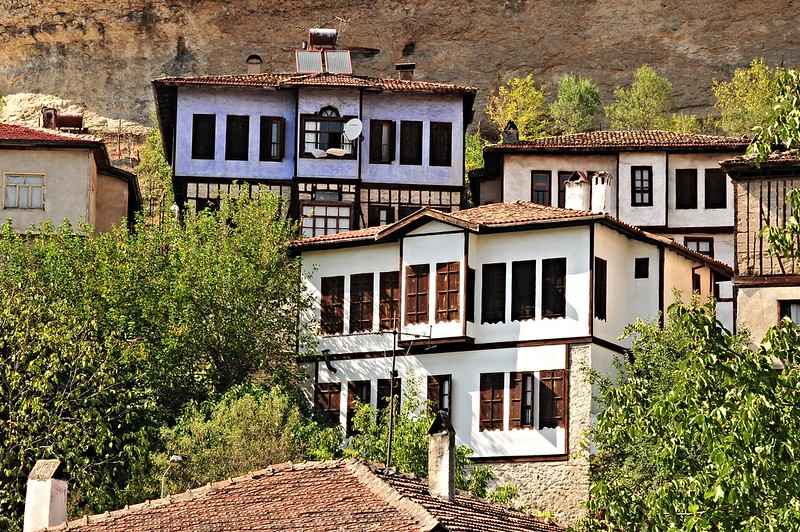
Safranbolu is ~4 hours from Istanbul. Its location along the East-West trade route from the 13th to the early 20th century made it an important stop for traders, helping it thrive as a caravanserai town.
This strategic spot played a big role in shaping the town’s unique architectural style, with its wooden houses, red-tiled roofs, bay windows, and detailed decorations. During the 17th century, the town prospered, and you can still see the results in its well-preserved buildings, which influenced the design of cities throughout the Ottoman Empire.
Architectural Highlights of Safranbolu
- Traditional Houses: Constructed with stone foundations and wooden upper stories, these houses feature distinctive bay windows and decorative elements.
- Old Mosque (Eski Cami): Built in 1322, this mosque is one of the oldest in Safranbolu
- Cinci Han and Cinci Hamam
Notable Figures born in Safranbolu
- İzzet Mehmet Pasha: A prominent 18th-century Ottoman Grand Vizier from Safranbolu, serving from 1794 to 1798.
- Karabaşzade Hüseyin Efendi (Cinci Hoca): A 17th-century mentor to Sultan İbrahim, known for his influence in the Ottoman court.
5. Archaeological Site of Troy
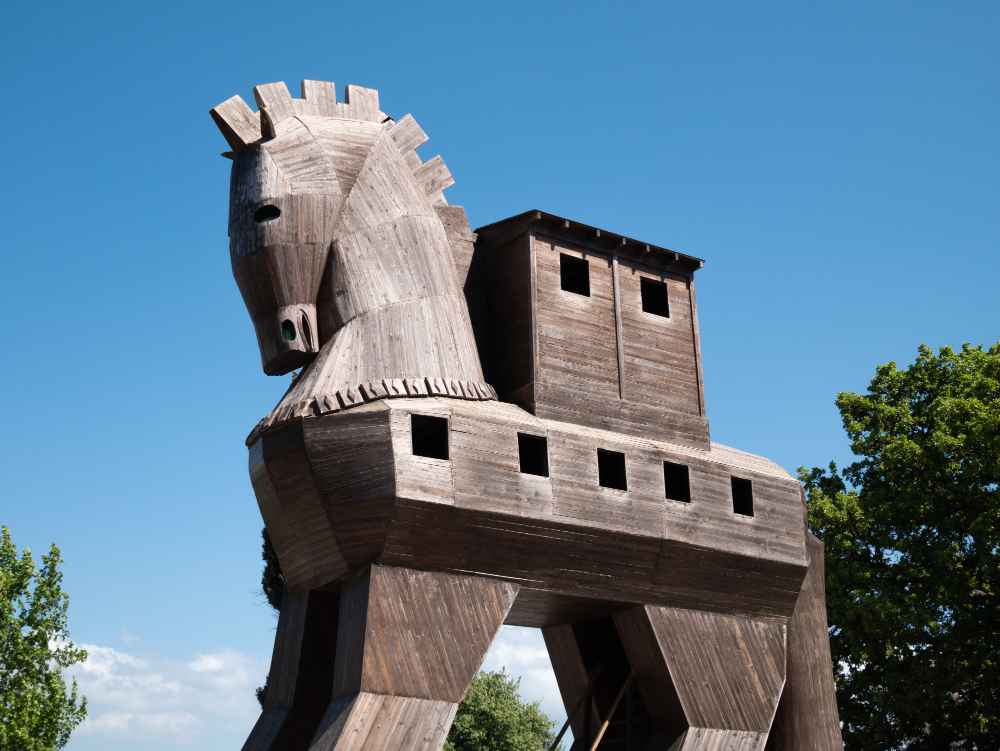
It’s impossible to find a person, who has never heard the name of Troy, be it from ancient Greek mythology or the 2004 movie with Orlando Bloom and Brad Pitt. Expectedly, neither the 2004 nor the 2018 Troy TV series was filmed on the actual site as it was open to the public in 2017.
The Archaeological Site of Troy is located near the village of Tevfikiye in northwest Turkey, near the Dardanelles Strait. Like almost all historical sites in Turkey, Troy is multi-layered: the archaeological evidence spans 9 layers from the Bronze Age (around 3000 BCE) to the Roman period (circa 500 CE).
Location Details
Key Structures and Findings at Troy Archaelogical Site:
- Scaean Gate: The main gate through which, according to myth, the Greek forces entered Troy. Excavations here have revealed the remains of monumental defensive walls, offering visitors a tangible connection to the ancient city’s fortifications.
- Fortifications: The city walls feature massive gates and elaborate defenses that were built to withstand sieges and attacks.
- Theater
- Residential and Public Buildings: Excavations have revealed homes, workshops, and public buildings. Some structures were clearly more elite, suggesting a hierarchical society with rulers, soldiers, and craftsmen.
- Artifacts: Numerous pottery shards, jewelry, weapons, and inscriptions
Cappadocia and Central Anatolia
Centered around the surreal landscapes of Cappadocia and nearby archaeological wonders:
6. Göreme National Park and the Rock Sites of Cappadocia
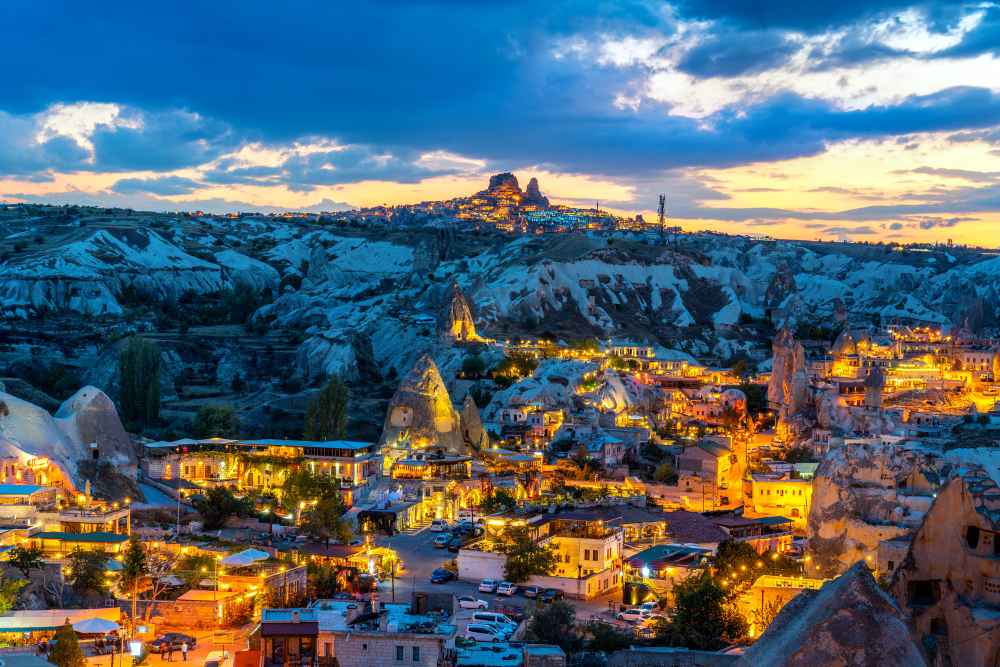
Cappadocia has been widely popular recently as one of the most romantic destinations. The hot air balloon ride over Cappadocia is probably even more popular than a similar experience in Egypt Luxor.
Tip
The site is very large (over 100 km2 / 39 mi 2) and is not recommended as a day trip due to the distance from Istanbul: the drive from Istanbul is very long, plus there’s an airport in Nevşehir.
The signature of the area is its “fairy chimneys”. They formed millions of years ago by volcanic eruptions. The volcanoes erupted ash, lava, and basalt, which hardened into soft tuff rock. Over time, wind and water erosion sculpted the tuff into the now-famous fairy chimneys, rock spires, and cone-shaped formations.
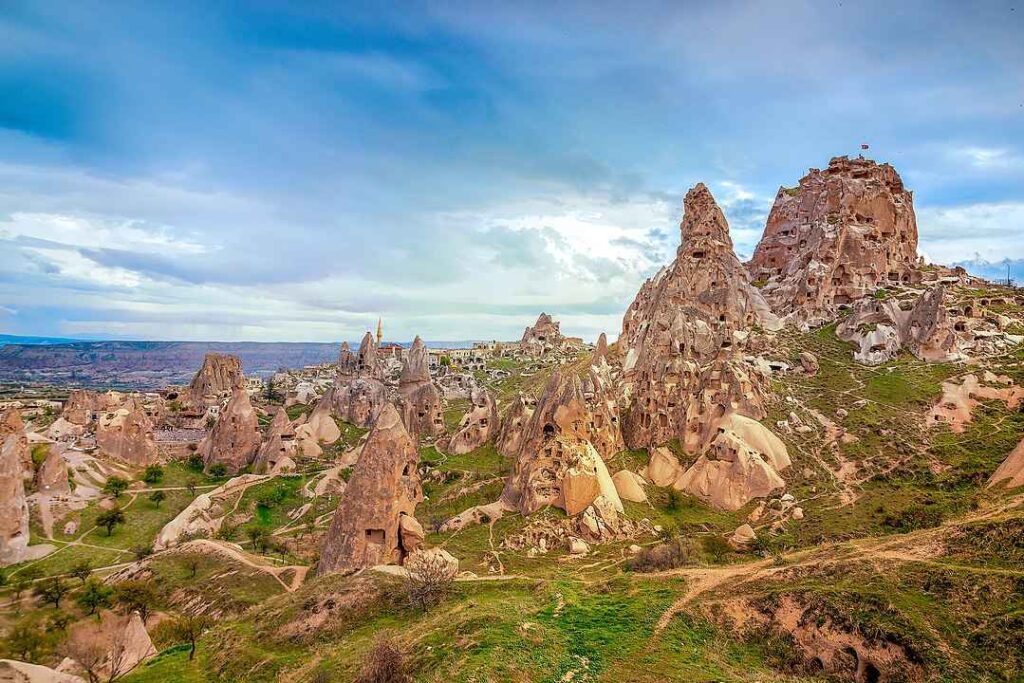
Key Locations of Göreme National Park
- Love Valley: Famous for its tall, phallic-shaped fairy chimneys, some of which reach over 30 m / 100ft in height.
- Pasabag Valley (Monks Valley): Known for its mushroom-shaped fairy chimneys, which have multiple “caps” on top of the stalks.
- Devrent Valley (Imagination Valley): This valley is often called “Animal Valley” because many of the rock formations resemble animals such as camels, snakes, and dolphins.
- Red Valley and Rose Valley: These valleys are famous for their reddish-pink hues, the color comes from the minerals in the rock formations.
- Göreme Open-Air Museum: This area is a collection of rock-cut churches, monasteries, and dwellings. The frescoes and wall paintings in these churches date from the 10th to 12th centuries and depict Biblical scenes, including images of Christ, the Virgin Mary, and Saint George. Some of the most notable churches are:
- Tokalı Church
- Apple Church
- Dark Church (Karanlık Kilise)
- Derinkuyu Underground City: One of the most extensive underground cities in the region, going deep up to 60 m / 200 ft and comprising 8 levels.
- Kaymaklı Underground City: features tunnels, wells, and storage rooms.
7. Hattusha: the Hittite Capital
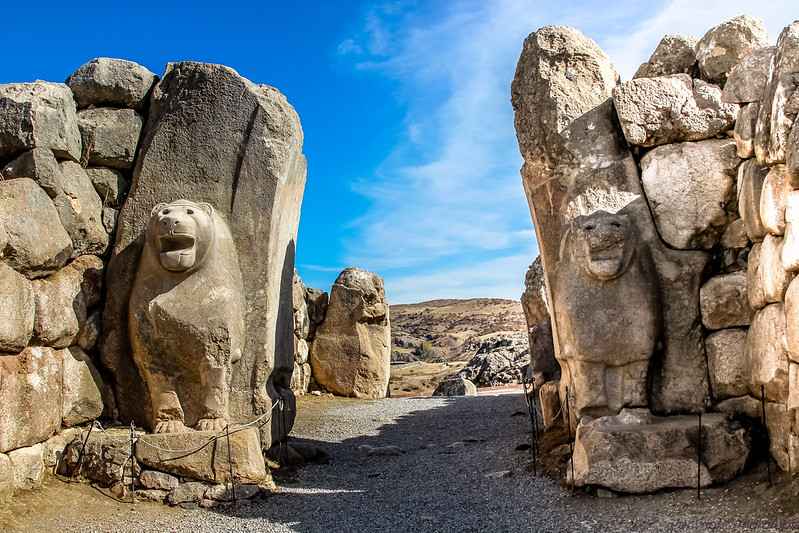
Hattusha is ~3 hours from Cappadocia, which makes it suitable for a day trip, and it’s even closer to Ankara
It is located near the modern village of Boğazkale in Turkey’s Çorum Province and was the capital of the Hittite Empire from the 17th to the early 12th century BCE. The city was destroyed around 1200 BCE, coinciding with the broader Bronze Age collapse.
The most photographed spot is the monumental gates of the city, adorned with reliefs, such as the Lion’s Gate and the Sphinx Gate, featuring the Hittites’ advanced stone-carving techniques.
8. Neolithic Site of Çatalhöyük
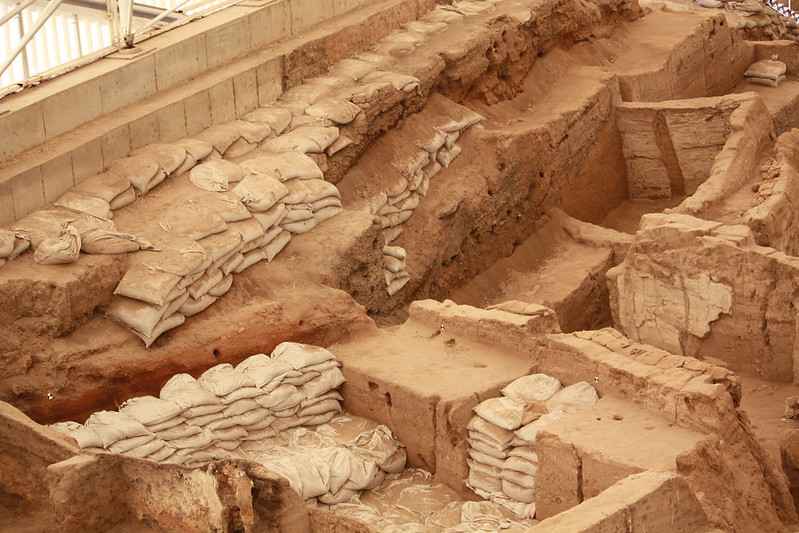
Çatalhöyük used to be one of the oldest known human settlements – occupied from approximately 7400 BC to 5600 BC and abandoned presumably due to environmental changes. It provides evidence of early agriculture, animal domestication, and craft specialization.
Location Details
9. Great Mosque and Hospital of Divriği
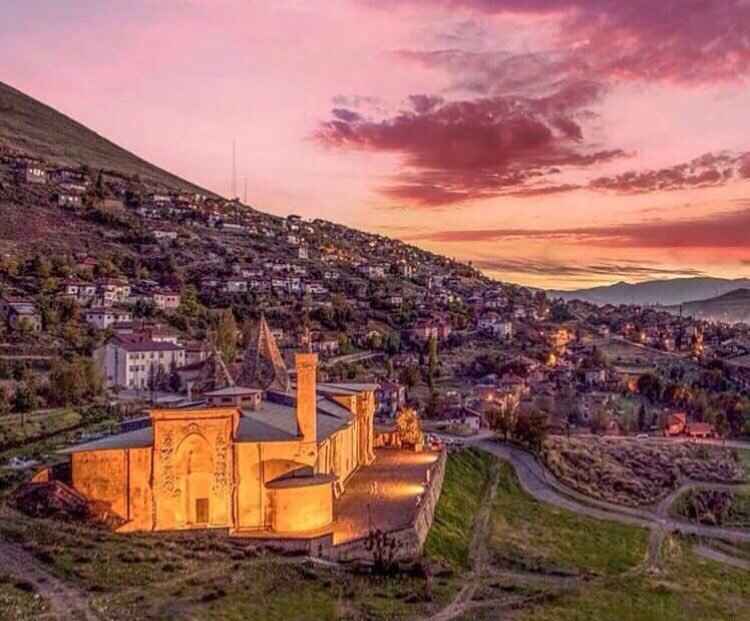
The complex was constructed between 1228 and 1229 and features both Christian and Islamic traditions. Emir Ahmet Shah commissioned the mosque to commemorate the Turkish victory over the Byzantine Empire at the Battle of Manzikert in 1071.
Location Details
10. Wooden Hypostyle Mosques of Medieval Anatolia
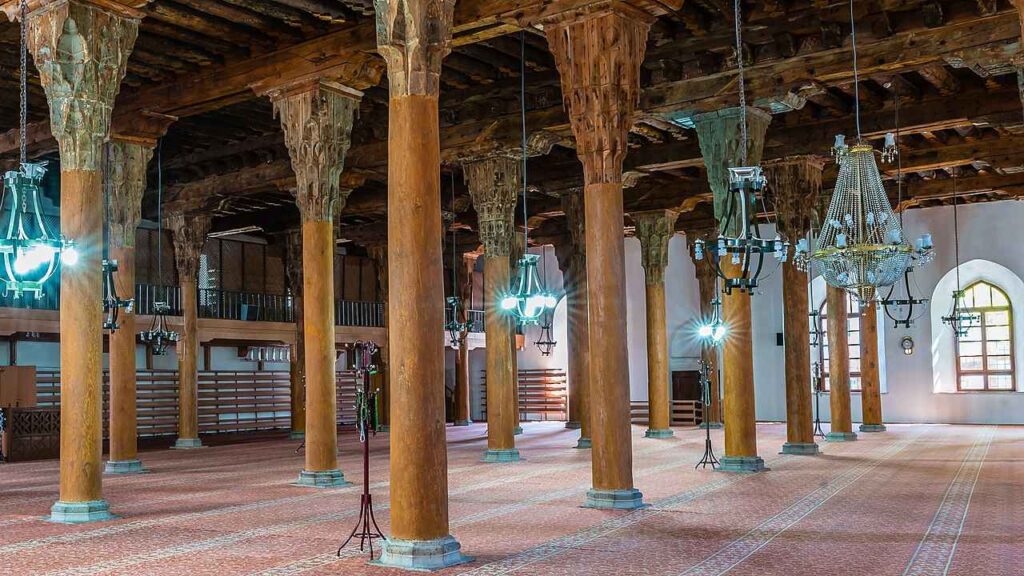
Though inscribed as a single site, the 5 mosques do not share the same location – they are scattered throughout multiple regions. All were built between the late 13th and mid-14th centuries during the Seljuk era.
Key Mosques in the Series
- Grand Mosque in Afyonkarahisar: constructed in 1272
- Aslanhane Mosque in Ankara: built in 1290
- Eşrefoğlu Mosque in Beyşehir: constructed between 1296 and 1299, this mosque is the largest among Anatolia’s wooden columned and beamed mosques
- Grand Mosque in Sivrihisar: built in 1232
- Mahmut Bey Mosque in Kasaba: constructed in 1366
Aegean Coast and Lycian Way
Combining coastal beauty, ancient ruins, and UNESCO-listed landmarks along the southwest. The best base for these trips would be Izmir.
11. Ephesus
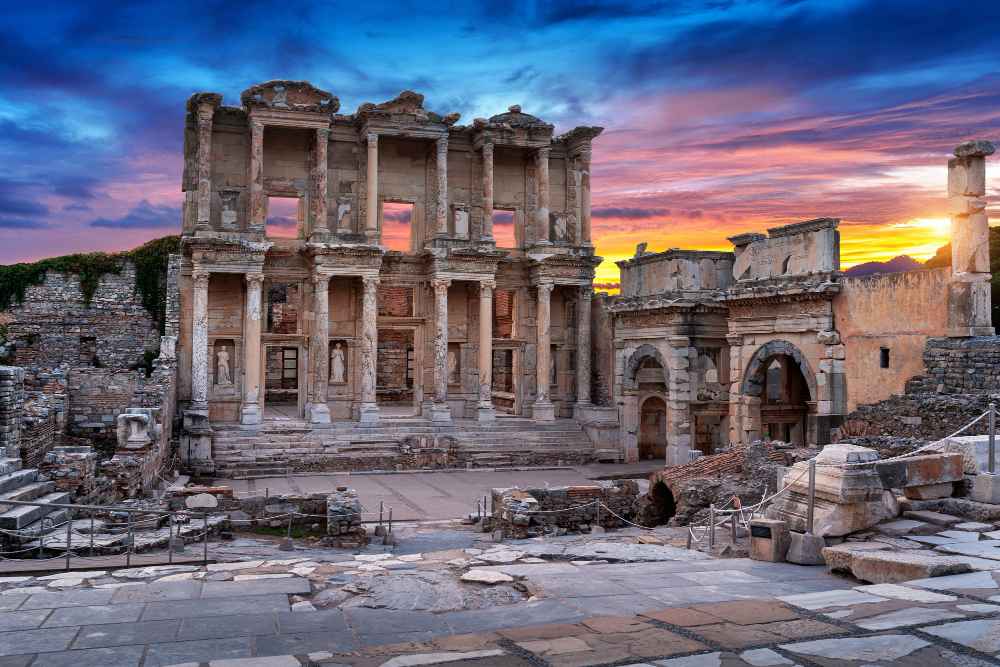
Back in its heyday Ephesus, used to be a striving trade port. Founded in the 10th century BCE by Attic and Ionian Greek colonists, it became 1 of the 12 cities of Ionian League. It used to be the 4th largest city of the ancient world after Rome, Alexandria and Antioch.
However the silting of the harbor caused the decline of Ephesus and, having suffered further damage from earthquakes, by the 15th century, it was completely abandoned.
Location Details
Since its discovery in 1863, Ephesus has been actively excavated, the estimates say that only 10-15% of the artifacts and structures have been uncovered. Furthermore, a boat access channel project has been proposed to provide maritime access to Ephesus and boost tourism.
Key Structures of Ephesus:
- Library of Celsus: a monumental library built around 117-120 CE, once housing 12,000 scrolls, renowned for its impressive façade.
- Great Theatre: a massive theatre with seating for 25,000 people
- Temple of Hadrian: built in honor of Roman Emperor Hadrian
- Curetes Street: the main thoroughfare of Ephesus
- The House of the Virgin Mary: a pilgrimage site believed to be the final residence of Mary, mother of Jesus, located near Mount Koressos
- Terrace Houses: luxurious homes of Ephesus’s elite
- Stadium: the Roman Stadium could seat 30,000 spectators
- Basilica of St. John: built in the 6th century CE, this basilica is believed to be the burial site of the Apostle John
- Gymnasium of Vedius: contains baths, classrooms, lobbies, and training halls
However, if you after the Temple of Artemis, seeking the ancient wonder of the world, there’s not much to see. Unfortunately, this is all that has been discovered so far:
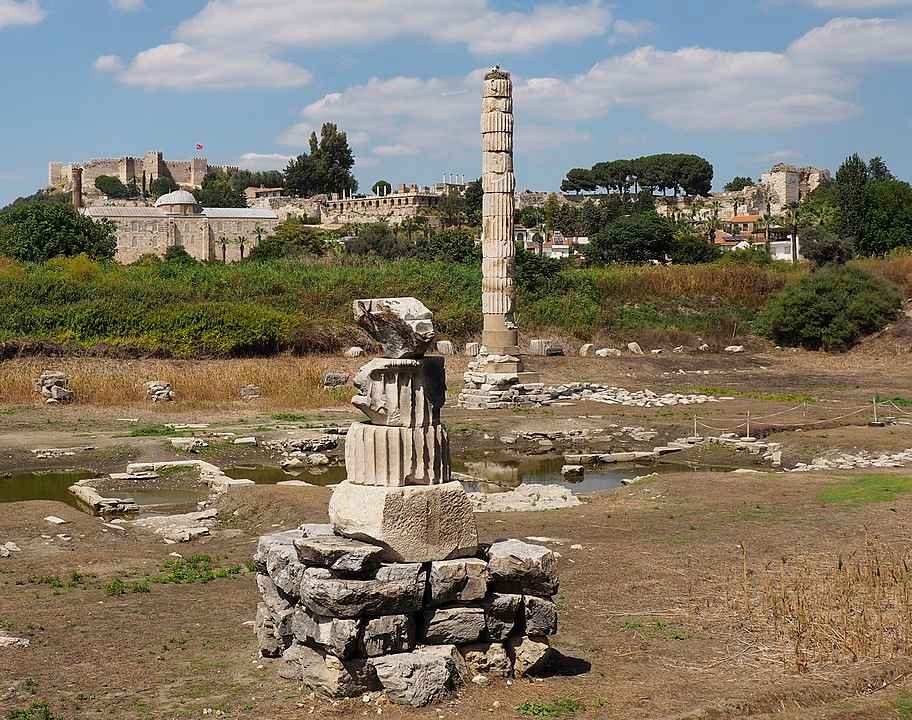
12. Aphrodisias
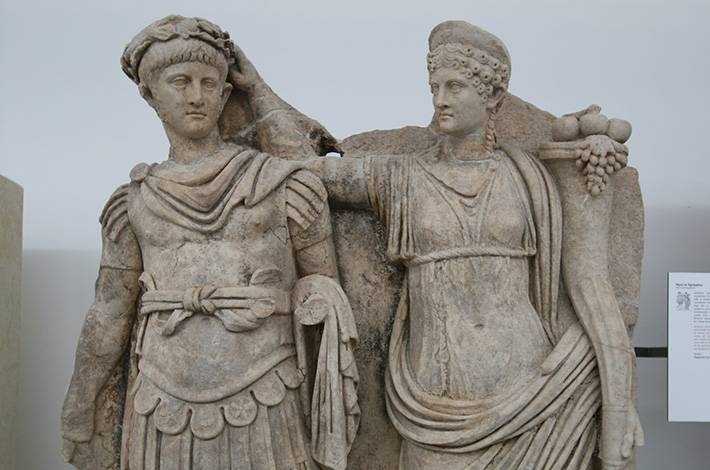
Same as Ephesus, Aphrodisias, is a Greko-Roman site, bearing the traces of 2 empires. As the name suggests it evolved as a sanctuary of the Greek goddess of love and beauty Aphrodite, that is known as Venus in Roman mythology.
It was founded in the 2nd century BCE and flourished through the next 7 centuries. The archaeological works at Aphrodisias started in 1904 and are still ongoing. The most recent finding is the colossal head of Zeus discovered in July 2024.
Location Details
13. Hierapolis-Pamukkale
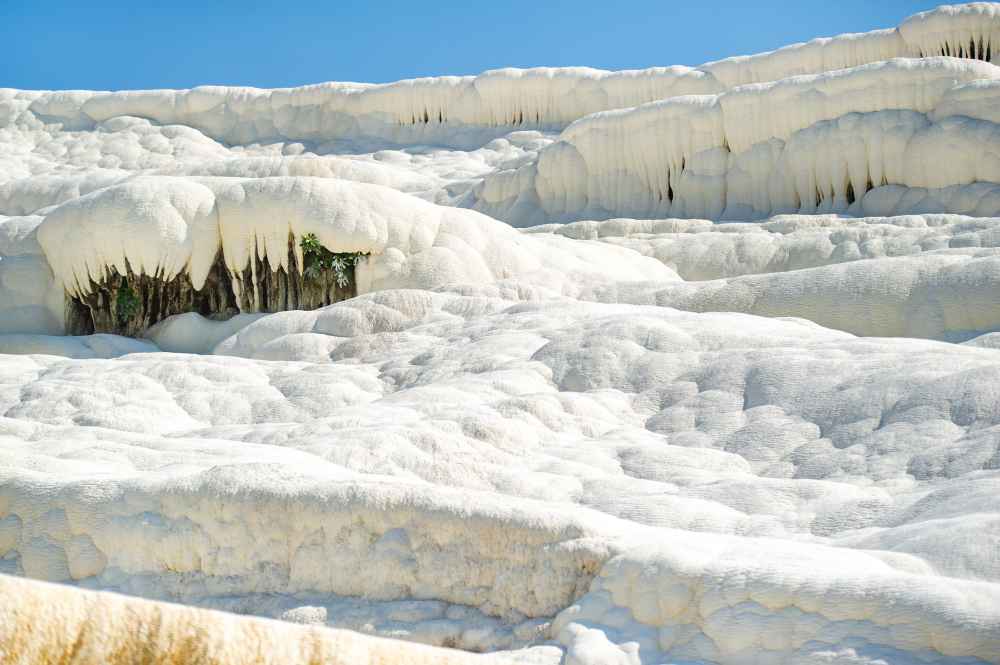
Pamukkale is definitely not a hidden gem, everyone has seen at least once the surreal white pools on TikTok or YouTube shorts and it’s the most popular daily tour offered by hotel guides on any Mediterranean seaside resort. The trip is usually combined with Hierapolis and Cleopatra’s thermal pools.
The name Hierapolis means “Holy City” in Greek, driven by the numerous temples and religious structures. The history of Hierapolis spans many centuries: it was founded in the 7th century BCE and existed until 1354 CE when a major earthquake seized the settlement.
Location Details
An interesting fact is that Pamukkale served as Calypso’s island filming set for the 1997th The Odysseus TV series.
14. Pergamon and its Multi-Layered Cultural Landscape
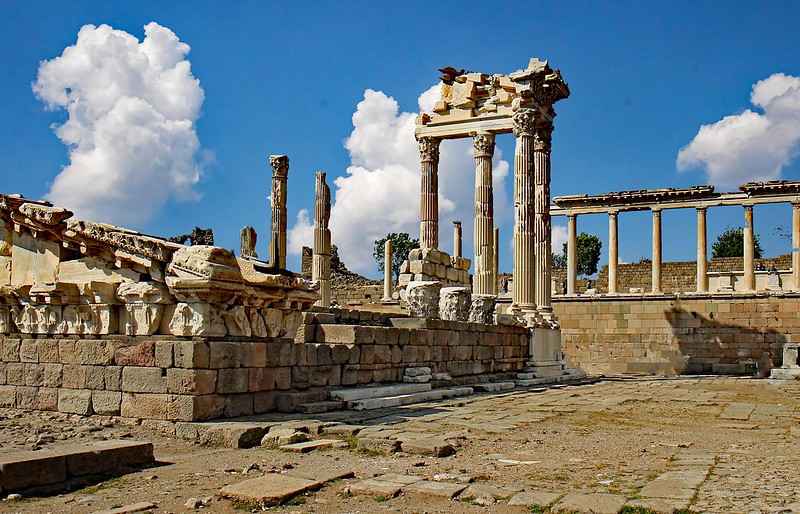
Like many locations on this list, Pergamon bears features of both Hellenistic and Roman cultures. Founded in the 7th century BCE, same as Hierapolis, it used to be a center for the cult of Asclepius.
Location Details
Interesting Facts about Pergamon
- Pergamon’s library rivaled the famous Library of Alexandria.
- The city was built on steep terrain, resulting in impressive terraced architecture.
- Pergamon was a major producer of high-quality parchment.
- Recent archaeological discoveries suggest the city’s history predates the Hellenistic period, possibly going back to the 7th century BCE.
- The Pergamon Altar, now in Berlin, is one of the most famous surviving structures from the ancient world.
15. Xanthos-Letoon
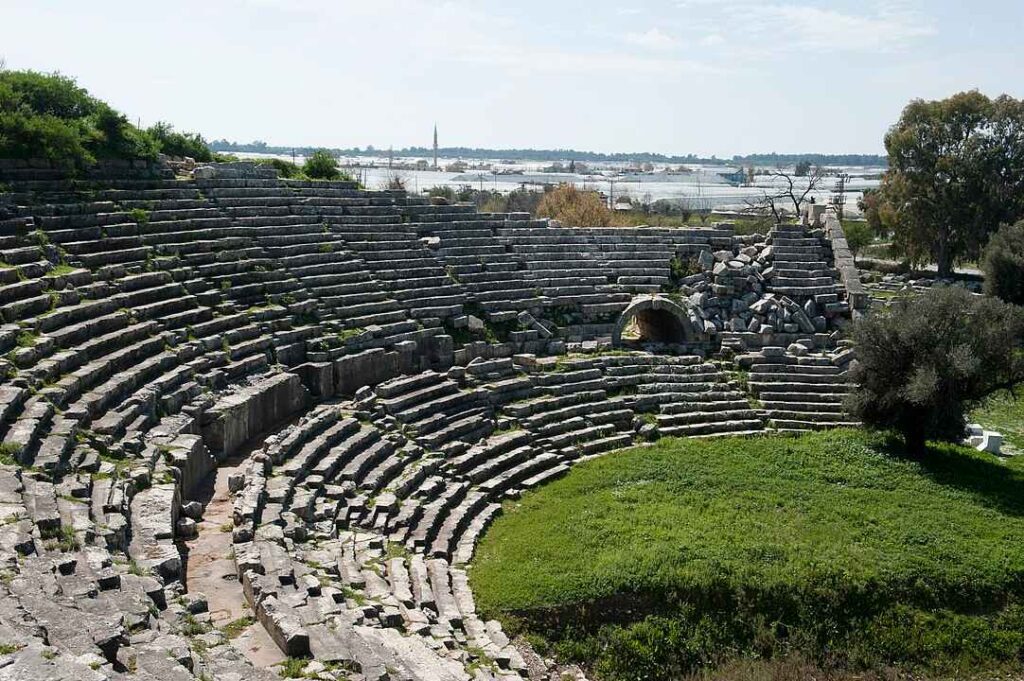
Xanthos and Letoon, are 2 interconnected archaeological sites. Xanthos was the capital of ancient Lycia. Letoon served as the federal sanctuary and religious center. The sites present insights into the Lycian, Greek, Roman, and Byzantine civilizations.
Location Details
Key Features of Xanthos-Letoon
- Xanthos:
- Lycian Acropolis
- Roman theatre and agora
- Distinctive rock-cut tombs and pillar tombs
- Letoon:
- 3 temples dedicated to Leto, Artemis, and Apollo
- Nymphaeum from the 2nd century CE
- Site of important inscriptions, including the Letoon trilingual
Eastern Anatolia
Less popular and full of hidden gems, rich in ancient civilizations and remote cultural landmarks, perfect for adventurous travelers. The best base for exploration is Mardin.
16. Göbekli Tepe
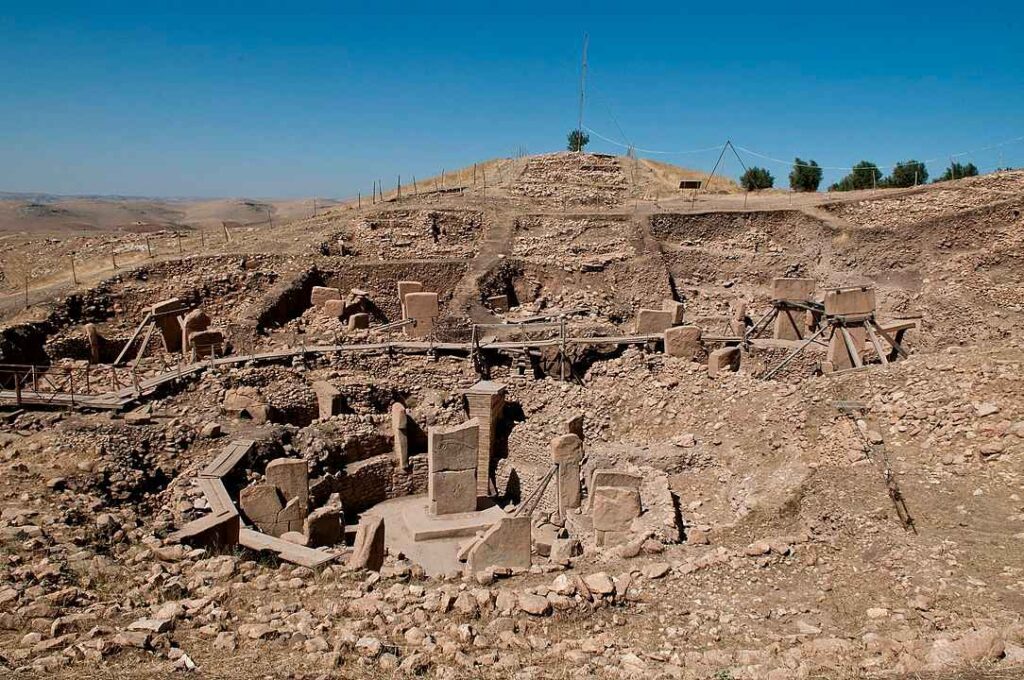
Göbekli Tepe is a Neolithic archaeological site, dating back to 9,600-8,200 BCE, which makes it over 11,000 years old. It is considered the world’s oldest known temple complex. In August 2024, researchers identified carvings at Göbekli Tepe as potentially representing the world’s oldest known solar calendar.
Location Details
17. Nemrut Dağ (Mount Nemrut)
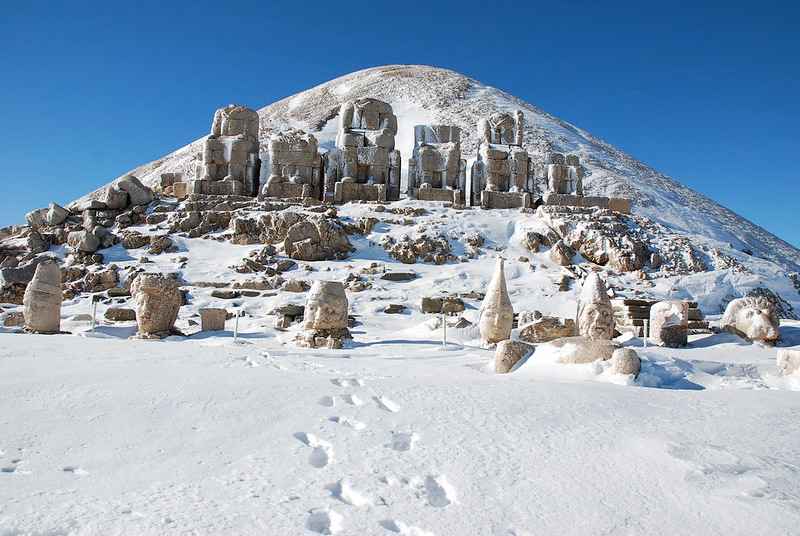
Mount Nemrut is renowned for its monumental statues and the tumulus (mound) constructed by King Antiochus I of Commagene in the 1st century BCE. The iconography at Mount Nemrut reflects a fusion of Greek and Persian religious motifs. For instance, the depiction of Antiochus I alongside Greek gods and Persian deities symbolizes the blending of Hellenistic and Achaemenid traditions.
The statues and terraces are aligned with the sun’s movements, particularly during sunrise and sunset. This alignment suggests that the site may have been used for astronomical observations and rituals timed with celestial events, reflecting the advanced understanding of astronomy by the Commagene people.
Tip
If you plan to drive yourself, make sure your rental car has tires fit for the winter season and snow
The main gods depicted in the statues at Nemrut Dağ are:
- Zeus-Oromasdes-Ahura Mazda
- Apollo-Mithras-Helios-Hermes
- Artagnes-Bahram-Heracles-Ares
- Goddess Commagene (possibly Atargatis or Tyche)
- King Antiochus I Theos (depicted as a god)
18. Diyarbakır Fortress and Hevsel Gardens Cultural Landscape
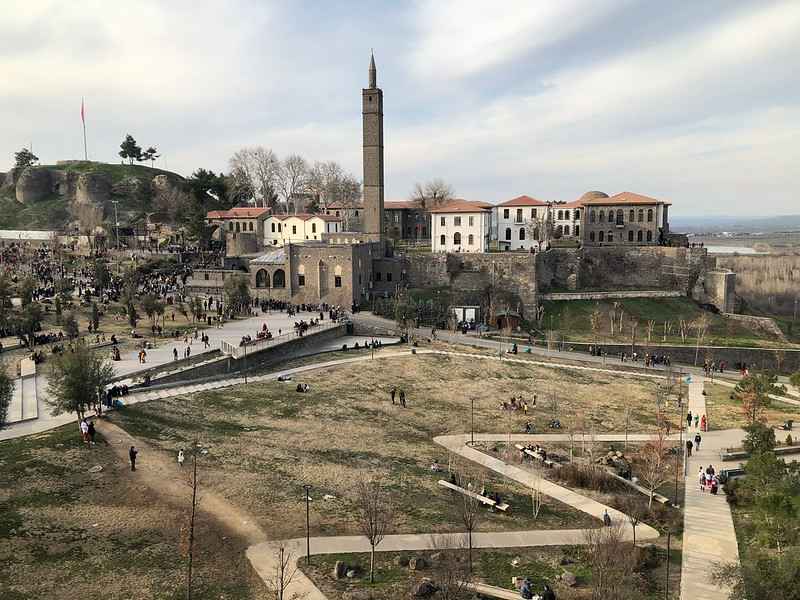
Diyarbakır Fortress dates back to the Roman period, with construction attributed to Emperor Constantine or Constantius II in the 4th century CE. It features 5.8 km of walls, up to 12 meters thick and 33 feet high, and comprises 82 towers and 4 main gates, built primarily with dark basalt and white limestone.
Location Details
Hevsel Gardens spans 700 hectares between the fortress and the Tigris River. They are first mentioned in 9th century BCE Aramean chronicles and have been compared to the Garden of Eden due to their provisioning role.
19. Arslantepe Mound
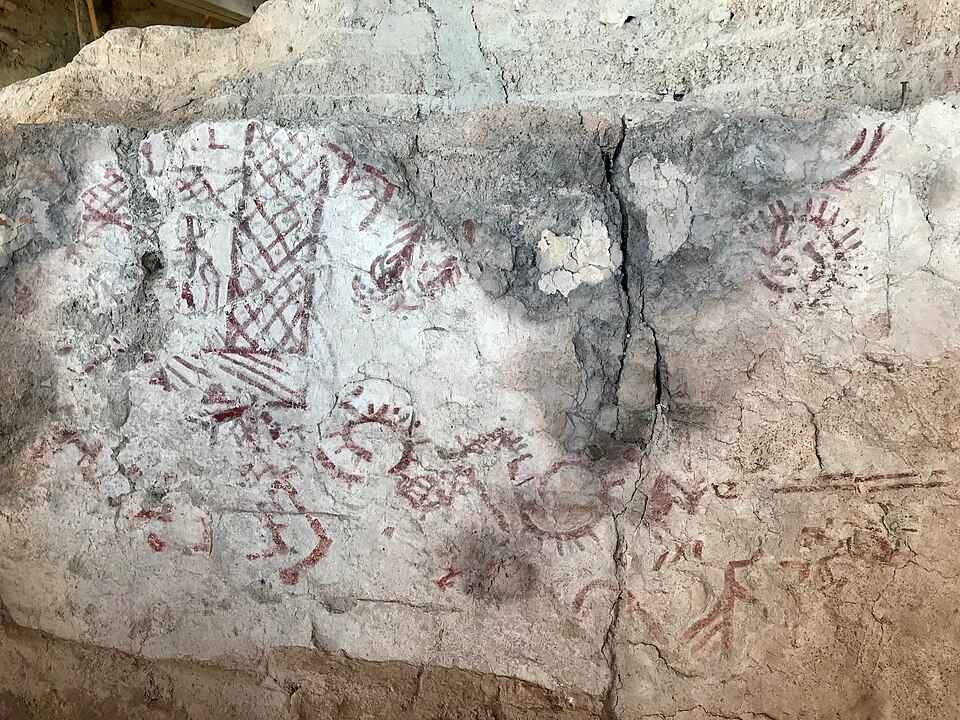
Arslantepe Mound is a 30-meter-tall archaeological tell located in the Malatya plain. It was occupied from at least the 6th millennium BCE until the late Roman period. The earliest layers date to the Late Chalcolithic period (4300-3900 BCE). The most prominent period was the Late Chalcolithic 5, featuring a palace complex.
It features evidence of the Early Bronze Age, including a Royal Tomb complex, and illustrates the emergence of state society and bureaucratic systems predating writing. In August 2024, a 6,400-year-old oven was discovered at the site
Location Details
20. Archaeological Site of Ani
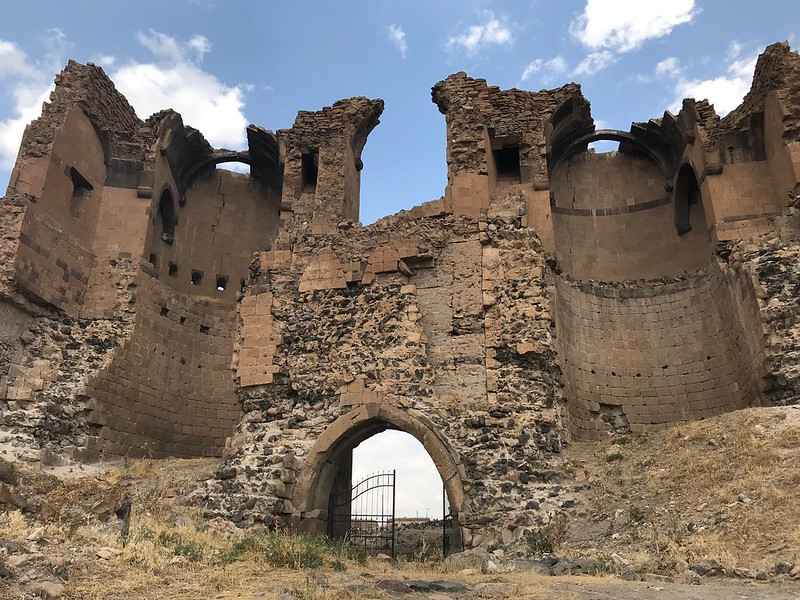
Ani was a medieval Armenian city, often called the “City of 1,001 Churches”. For almost 10 centuries of its existence, Ani was influenced by multiple civilizations that ruled the city: Bagratid Armenian, Byzantine Empire, Georgian, and Seljuk. It used to be a key trade center on the Silk Road.
Key Buildings of Ani
- Cathedral of Ani: constructed in the early 11th century, this domed basilica was the seat of the Armenian Catholicos for nearly 50 years.
- Church of St. Gregory of Tigran Honents: built in the 12th century, this church features intricate carvings and inscriptions
- Church of St. Gregory of Abughamrents
- Seljuk Bridge: constructed in the 12th century, this bridge served as a vital crossing over the Akhurian River.
Location Details
21. Gordion
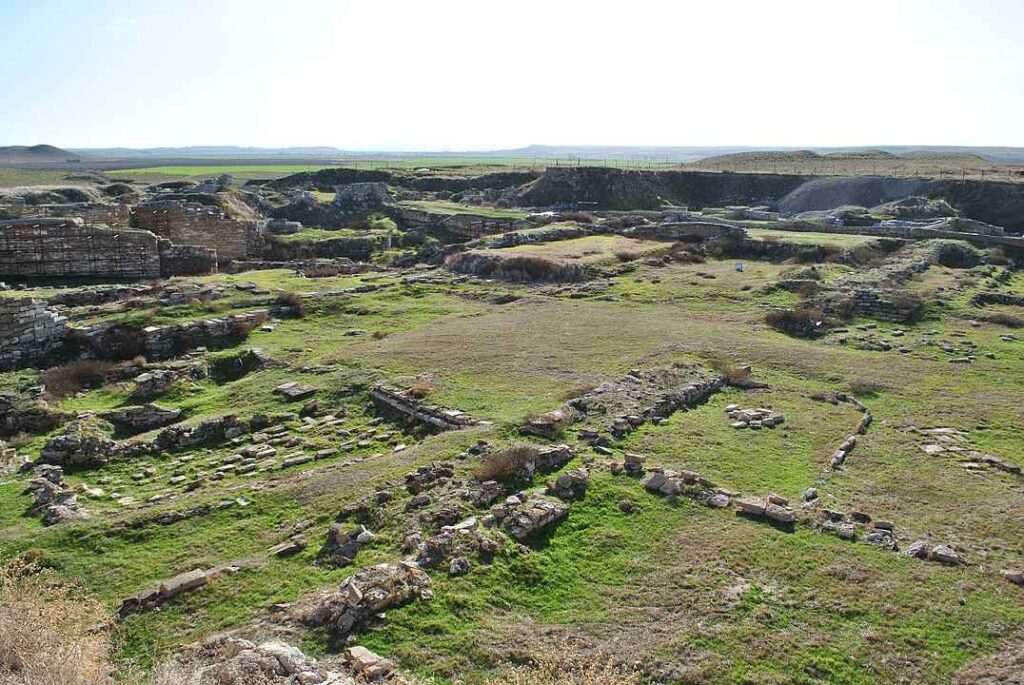
Gordion, used to be the capital of the ancient Phrygian Kingdom. It is believed to be inhabited as early as 2500 BCE, with continuous occupation through the Bronze Age and into the Iron Age. In classical literature, it’s connected to the ‘Gordion Knot’, supposedly cut by Alexander the Great in 334 BCE. The most renowned Phrygian king, Midas is traditionally associated with the legend of the “golden touch.”
Location Details
Turkey UNESCO Sites Map
Turkey is a large country and fitting the whole UNESCO list in a single trip is very hard, so I recommend breaking it down into several trips, choosing the following locations as a base: Istanbul, Cappadocia, Izmir, and Mardin.
How many UNESCO sites are in Turkey?
21 inscribed and 70+ in the tentative list
What are the Ancient Greek sites in Turkey?
Ephesus, Hierapolis, Pergamon, Aphrodisias, Troy
What are the best historical sites in Turkey?
The mosques of Istanbul, Ephesus, Göbekli Tepe, Göreme Open-Air Museum

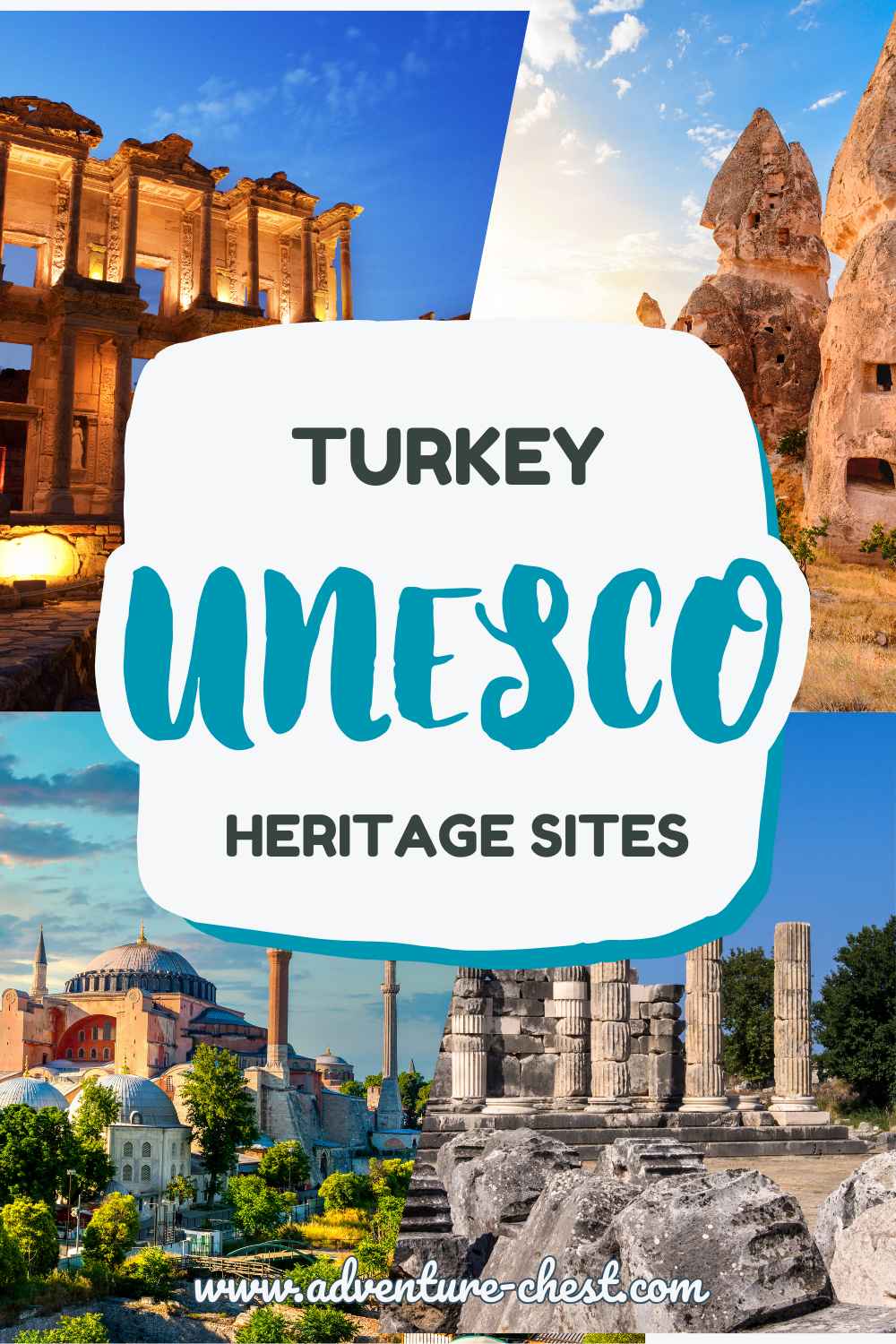
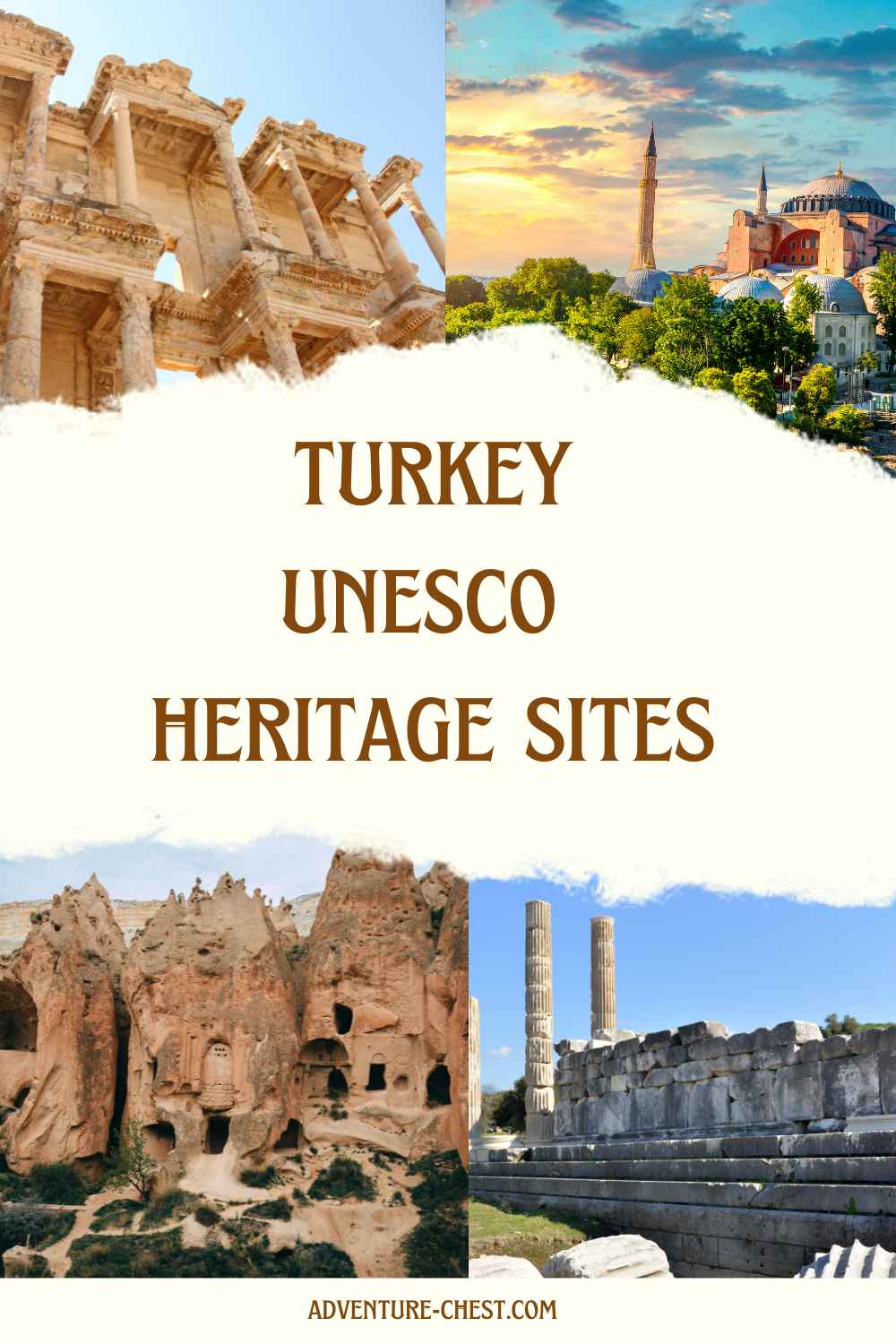




Comments